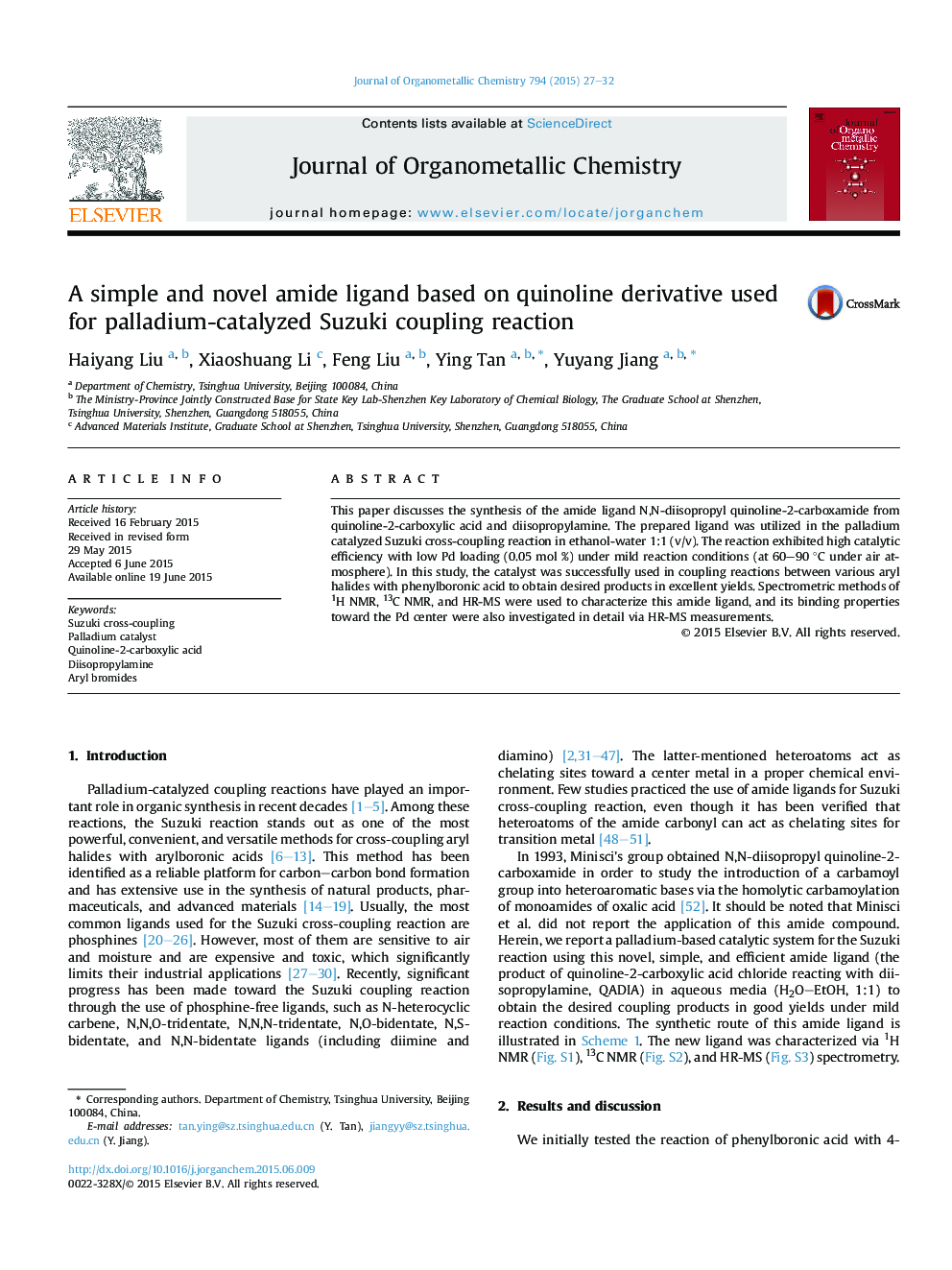| Article ID | Journal | Published Year | Pages | File Type |
|---|---|---|---|---|
| 1320786 | Journal of Organometallic Chemistry | 2015 | 6 Pages |
•A simple amide derived quinoline derivative was used in the Suzuki reaction.•The reaction exhibited high catalytic efficiency with low Pd loading (0.05 mol%).•Binding properties of the amide ligand toward Pd were studied via HR-MS measurement.
This paper discusses the synthesis of the amide ligand N,N-diisopropyl quinoline-2-carboxamide from quinoline-2-carboxylic acid and diisopropylamine. The prepared ligand was utilized in the palladium catalyzed Suzuki cross-coupling reaction in ethanol-water 1:1 (v/v). The reaction exhibited high catalytic efficiency with low Pd loading (0.05 mol %) under mild reaction conditions (at 60–90 °C under air atmosphere). In this study, the catalyst was successfully used in coupling reactions between various aryl halides with phenylboronic acid to obtain desired products in excellent yields. Spectrometric methods of 1H NMR, 13C NMR, and HR-MS were used to characterize this amide ligand, and its binding properties toward the Pd center were also investigated in detail via HR-MS measurements.
Graphical abstractA simple and novel amide ligand based on quinoline derivative was utilized in the palladium catalyzed Suzuki cross-coupling reaction in ethanol-water (1:1, v/v). The reaction exhibited high catalytic efficiency with low Pd-loading (0.05 mol%). The binding properties of this amide ligand toward Pd were studied in detail through HR-MS measurement.Figure optionsDownload full-size imageDownload as PowerPoint slide
